-
 Ever Wondered How to Make Paneer at Home? Here is the Complete Guide to Take Out Soft and Creamy Paneer from Milk at Home (2021)
Ever Wondered How to Make Paneer at Home? Here is the Complete Guide to Take Out Soft and Creamy Paneer from Milk at Home (2021)
-
 Gained Extra Weight in the Lockdown? Best Slimming Tea to Get in the Right Shape and Live a Healthier Life
Gained Extra Weight in the Lockdown? Best Slimming Tea to Get in the Right Shape and Live a Healthier Life
-
 Looking to Spice Up Your Next Meal? Here Is a List of Best Food Delivery Apps in India for 2019
Looking to Spice Up Your Next Meal? Here Is a List of Best Food Delivery Apps in India for 2019
What is Intermittent Fasting?
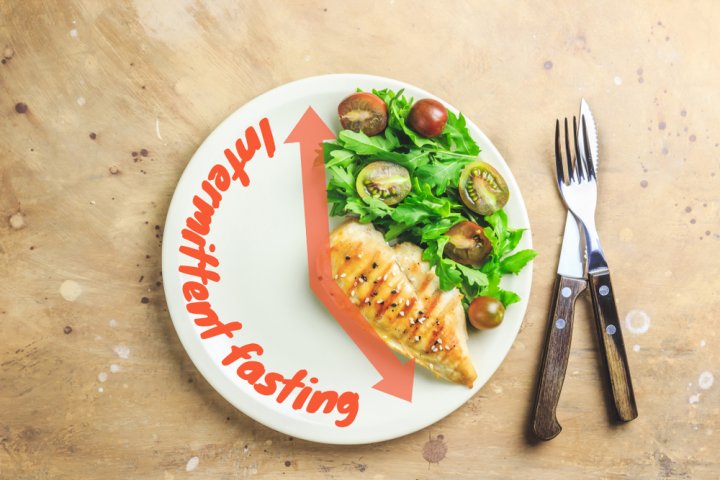
Since the spread of COVID, 19 people are mostly stuck in homes and are always worried about their health. They are trying new and innovative ways to stay fit, and one of the most popular ways to do so is the Intermittent fasting (IF). It helps in losing weight, improve your health and lead a simple life. Researchers have proved that IF has excellent effects on a person's body and brain and helps them live longer.
IF is creating an eating pattern which cycles between periods of eating and fasting. In IF you focus on when and when not to eat rather than what to eat. The most common IF is the daily 16 hours fast or 24 hours fast twice each week but before that let us look at how Intermittent fasting works.
How Does Intermittent Fasting Help Lose Weight

Intermittent fasting helps in losing weight. When we eat the food is broken down by enzymes and ends up as molecules in our bloodstream. The carbohydrates and grains are broken down into sugar and is used for energy, but when it is not used ultimately, it is stored as fat. This is done through insulin which is a hormone made in the pancreas. Insulin takes the sugar into the fat cells and stores it there. So, in between meals (if we don't eat snack) the insulin levels go down, and the fat cells start using the stored sugar to use for energy which leads to weight loss.
IF helps in bringing the insulin levels go down so that we start burning fat. In other words, when you don't eat, your body starts using the stored fat for energy and the fat decreases gradually. The key is to maintain a balance between eating and fasting. If a person eats and does not stop till they go back to sleep, they are not allowing the body to burn the stored fat which leads to weight gain; therefore, one needs to increase the time spent in burning the stored fat by not eating for a while, and this is Intermittent fasting.
Benefits of Intermittent Fasting
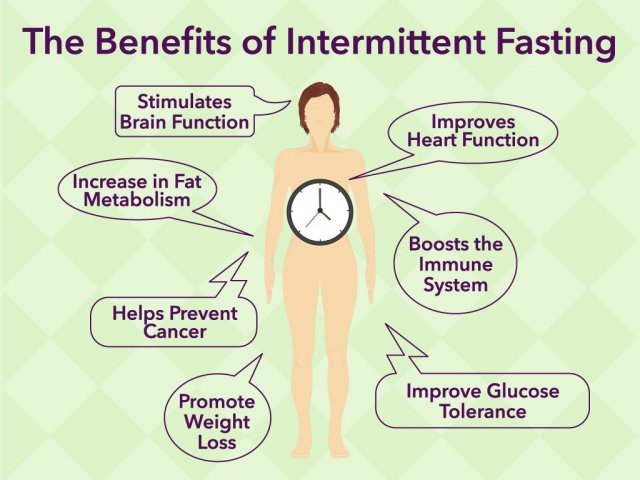
Intermittent fasting helps in reducing weight but has many other benefits as well. It helps in lowering your cholesterol, improve glucose levels, reduces liver fat and improves blood pressure. Many people have admitted that it helped them to improve motor coordination and helps them sleep better. Some studies have also shown that IF helps in reducing tumour growth and could help in preventing breast cancer.
One needs to remember that IF is not for everyone, they need to do proper research and consult a doctor before they start IF for it to work for them. Here is a list of some of the benefits of IF.
- 1. Most of the people use IF to lose weight, but it only helps if you eat enough to take in the required amount of calories during meal times. Short term fasting increases the metabolic rate by 14% and helps in burning down excessive calories.
- 2. IF also reduces cell damage by oxidation and inflammation.
- 3. It also lowers blood sugar and decreases the risk of diabetes or control its effects on the body.
- 4. It is known to improve memory.
- 5. IF also delays the progression of multiple sclerosis and Parkinson's
- 6. It is known for lowering the risk of cancer of many types and helps in recovering from surgery.
Types of Intermittent Fasting
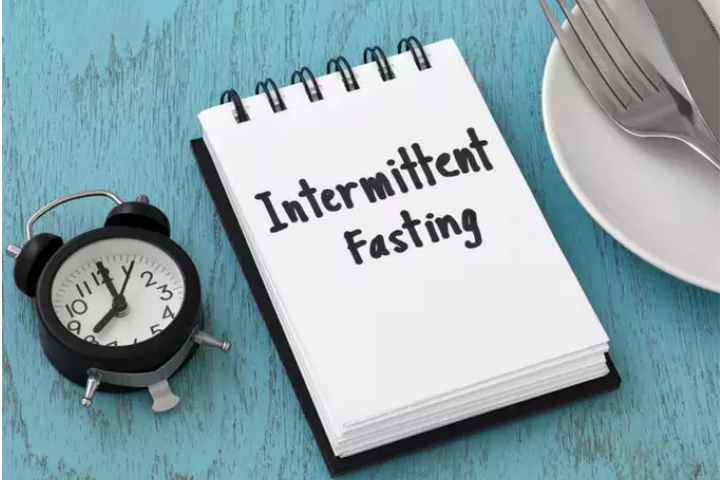
Now that we know how IF works, let us look into the different types of Intermittent fasting. You can go through it and see which way is the best for you although it is recommended to start by the 16:8 and let your body get accustomed to it before you go on to the other fasts.
16:8 Diet
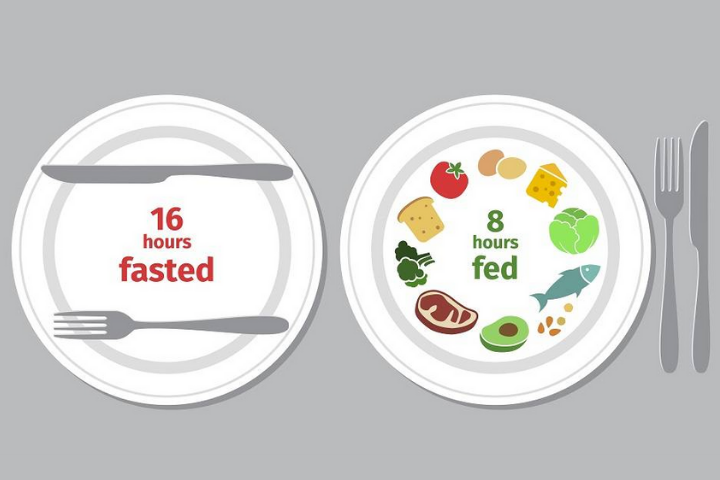
The first and most important thing to do before you start any diet is to see a doctor and find out if you are ready for it. If you have type 1 diabetes, pregnant or lactating, then you should stay away from it.
16:8 fasting is also known as the 8-hour diet. You eat during an 8-hour window each day and fast the rest of the day. You need to be careful, though because, during 16:8, you are not making decisions based on how hungry you are, but you focus on the time window and may end up eating a lot. During 16:8 diet you need to spend 16 hours of each day taking in nothing but unsweetened beverages like water, sugar-free coffee and tea and you eat during the eight hour window period. It is advisable to fast at night and to skip breakfast, and you can eat your first meal in the middle of the day. You can eat anything you want, but a lot of people follow the keto diet during this window period of better and faster results.
By eating anything does not mean you start eating junk food, you need to create a balance and eat healthy food. A lot of people fail to take in the required amount of calories during the window period, which is not effective and remember to stay away from excessive sugar. You can eat lean meat, eggs, dairy, vegetables, nuts and beans, tofu and other high fibre foods to stay full and healthy. Don't forget to drink lots of water because most of the time, thrust may make you feel hungry.
If you are thinking of starting a 16:8 diet, then stay away from TV as the crazy delicious food ads will make you want to eat even when you are not hungry. Remember staying a little hungry is a good thing; it will help you recognize fullness. If you like to exercise, do it before you eat, or you end up feeling hungry half an hour later and will end up eating. The 16:8 is not as hard as it sounds, be determined and focus on your calorie intake, drink fluids, and you will be OK.
5:2 Fasting
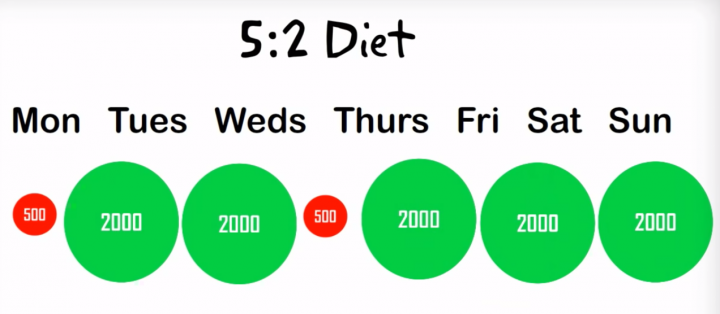
Another type of IF is the 5:2 diet in which you eat regularly for 5 days and eat very little for 2 days. Some people think that this should not be called a fast because you are not fasting but limiting your calorie intake for 2 days, so if a person is eating 2000 calories each day would only eat 500 calories on the fasting days. Most people recommend spacing the fasting days, so they consider fasting on Monday and Thursday or Wednesday and Saturday. This will help you create a balance and will not make you feel depressed and think that you are missing out on two consecutive days. Remember that the 5 days you eat you maintain a healthy diet by staying away from sugar and processed food.
The 5:2 diet lets you lose fat without losing your muscles because it increases the level of human growth hormone in the body, which helps in building muscle mass. You can eat almost anything you want as IF focuses on the meal timing more than what you eat but aim at eating nutritious food. Eat a lot of vegetables, fruits, lean proteins, whole wheat bread, pasta, brown rice, quinoa, whole grain and healthy fats which provide energy to your body and brain. You should also eat high fibre food like carrots, cauliflower, leafy greens, sprouts, sweet potatoes, squash and broccoli. You should even eat citrus fruits, berries, etc. Take in a lot of omega 3 and omega 6 through avocados, oily fish and olive oil. You can also eat lots of lean protein like chicken breast, ground turkey, eggs to get enough energy and protein for muscle growth and cellular repair. Drink whatever you want on the rest days but stick with water on the fasting days.
If you follow the diet as mentioned above, you will be able to stick to the 5:2 diet and gain a lot out of it.
20:4 Fasting/Eat-Stop-Eat

The 24 hour fast is also called the Eat-Stop-Eat diet, which is followed either once or twice in a week. During this diet plan, you eat in a 4-hour window and fast during the 20-hour window. So, if you eat between 2:00 pm and 6:00 pm each day, then you fast for the other 20 hours. You can either eat one massive meal or two small meals during the eating period.
Some call this diet The Warrior Diet, and it was invented in the early 2000s by Ori Hofmekler based on his personal experiences. Again remember to maintain a balance between both the windows. You might feel hungry for the first few days, but soon the body gets used to it, and it gets easier, this diet may also become addictive which is not a bad thing at all as long as you maintain the balance and eat the required amount of calories.
The 24 hour fast has significant benefits as long as you remember that when you are not eating anything at all your body still needs the energy to function and while you don't eat your body uses the glucose in the body for it, therefore, take glucose through carbohydrates like grains, dairy products, fruits, legumes, vegetables and of course beer and doughnuts can be included in moderation.
The liver releases the glucose into the bloodstream, but during the 24 hours fast the liver uses the last of the glucose stored, and the body goes into gluconeogenesis, and your body starts burning the fat for fuel. If you don't maintain the balance between fasting and eating, then the body will start using your muscles for energy, and you begin to starve. You might feel that 24 hours fast does not sound safe, but it is safe as long as you eat proper food during the eating window. Don't forget to drink lots of water to clean your body during the fast and you will see its benefits.
During the feeding window, you can eat cooked vegetables like cauliflower, Brussels sprouts, zucchini, green vegetables etc. You can also eat proteins like chicken, steak, fish, eggs. Eat a lot of starch through beans, potatoes, corn, sweet potatoes but don't overdo it if starch makes you feel hungry. Gorge on oats, quinoa, pasta and even some pizza. Drink milk, eat cheese and yoghurt, nuts, olive oil etc. There are a few things you should avoid as well like candy, cookies, ice cream, chips fast food, fried food and processed meats, refined carbohydrates and artificial sweeteners. Tame your inner animal and stay away from coke, fruit juices, sweetened lemon aid etc.
So you see there are plenty of things you can eat and follow the 24 hours fast and lose weight while sitting at home.
36 Hour Fast
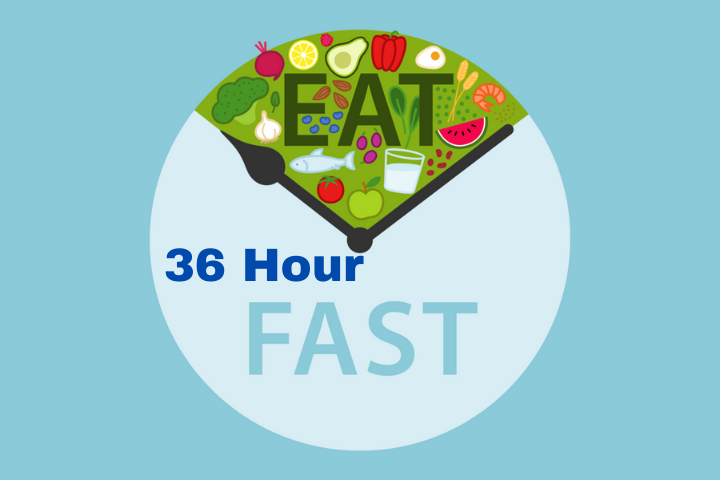
You can also look into the 36 hour fast in which you fast for one whole day, so if you eat dinner on day 1 at 7 pm, then you will skip food on day 2 and eat breakfast on day 3 at 7 am. This is called the 36-hour fasting diet.
This diet increases the basal metabolic rate due to the increase of norepinephrine. The fat in the body is burned for energy over glycogen or carbohydrates in leads to a rise in norepinephrine levels, and the basal metabolic rate reduces by 20% leading to weight loss. When you eat after a 36-hour fast, your body continues to burn fat over glycogen for energy. It is noticed that a long term use of a 36-hour fast lead your body into using this method of burning fat permanently although it is not clear as to how often you need to fast to bring your body in this state.
Again eat healthy foods and maintain a balance between eating, not eating and exercising to lose weight. Studies have shown that people don’t feel hungry on eating days; they end up eating 20% less because the body gets used to eating less.
Spontaneous Fasting / Skipping Meals

Another great way of getting into the IF is the automatic meal skipping. You skip your meals and eat only when you are hungry. Our body is equipped to handle long periods of famine, so skipping a meal or two does not harm the body in any way. So, don't be afraid of skipping your breakfast or lunch if you don't feel like eating. Eat when you want to and eat healthily, and you are doing the spontaneous meal, skip fasting.
Meal skipping helps in reducing cholesterol levels, increases the levels of antioxidants like Uric acid, reduces any inflammation in the body, helps in improving asthma, and best is that it helps in reducing weight. Just make sure that when you skip a meal, don't overeat the next time you eat as it may cause adverse effects in your metabolic system. Eat a healthy amount of food instead then trying to make up for the skipped meal. So if you're a good breakfast, you can skip your lunch and eat dinner, and you are all set.
FAQs on Intermittent Fasting

If you still have questions about Intermittent fasting, then here are some of the FAQs for you.
- 1. How does Intermittent Fasting Work?
It is like a low carb diet. Increasing the time between meals makes your body use the stored fat for energy. Your blood insulin levels go down, and you start to burn the stored body fat and lose weight. - 2. What are the Benefits of Intermittent Fasting?
IF helps you reduce weight and improves your metabolic health, your digestive function and circadian rhythm. Overall it improves your body and brain. - 3. Can I Drink Liquids During the Fast?
It would help if you drank a lot of fluids during the fasting or eating period. You can drink water, coffee and tea without sugar etc. Coffee is recommended as it curbs hunger. - 4. Isn’t It Unhealthy to Skip Breakfast?
Not really, it only unhealthy if you follow an unhealthy lifestyle after skipping your breakfast. When you skip your breakfast, you should eat healthy food for the rest of the day. - 5. Can I Take Supplements While Fasting?
Off course you can, but fat-soluble vitamins should be taken with meals. - 6. Can I Work out While Fasted?
Yes, you can fast and workout. - 7. Will Fasting Cause Muscle Loss?
Any weight-loss method cause muscle loss; therefore, it is essential to take proper protein intake and lift weights, although it is proved that intermittent fasting causes less muscle loss than other methods. - 8. How long does it take to get used to intermittent fasting?
It may take 5 or 6 days to get adjusted with the new pattern of fasting. It would be best if you started with bigger eating windows and slowly increase the fasting window. - 9. How do I deal with mental fog or fatigue while I'm fasting?
You need to drink a lot of water to stay away from fatigue. Drink black coffee and feel energetic and try meditation. You can also do some low impact exercise or take a walk.
-
 Ever Wondered How to Make Paneer at Home? Here is the Complete Guide to Take Out Soft and Creamy Paneer from Milk at Home (2021)
Ever Wondered How to Make Paneer at Home? Here is the Complete Guide to Take Out Soft and Creamy Paneer from Milk at Home (2021)
-
 Want More Tantalizing Breakfast Ideas? Here are 6 Scrumptious Egg Recipes for Breakfast That Will Make You Want to Eat Eggs All Day (2020)
Want More Tantalizing Breakfast Ideas? Here are 6 Scrumptious Egg Recipes for Breakfast That Will Make You Want to Eat Eggs All Day (2020)
-
 How to Increase Weight: Foods to Include in Your Diet for Your Weight Gain Journey + Tips for Gaining Weight (2020)
How to Increase Weight: Foods to Include in Your Diet for Your Weight Gain Journey + Tips for Gaining Weight (2020)
-
 Say Goodbye to Uncomfortable Gas Problem with these Easy Home Remedies for Gas Relief 2020
Say Goodbye to Uncomfortable Gas Problem with these Easy Home Remedies for Gas Relief 2020
-
 नाश्ता दिन का सबसे महत्वपूर्ण भोजन है: यहां 10 सर्वश्रेस्ठ पौष्टिक और कम समय में तैयार होने वाली भारतीय नास्ता रेसिपी की सूचि दी गयी है जो आपको दिन शुरू करने के लिए पर्याप्त ऊर्जा देंगी,अभी देखें(2020)।
नाश्ता दिन का सबसे महत्वपूर्ण भोजन है: यहां 10 सर्वश्रेस्ठ पौष्टिक और कम समय में तैयार होने वाली भारतीय नास्ता रेसिपी की सूचि दी गयी है जो आपको दिन शुरू करने के लिए पर्याप्त ऊर्जा देंगी,अभी देखें(2020)।
Makes Your Healthy Lifestyle Simpler
Eating healthy is simple, but it can be tough to manage. One of the biggest challenges is all the work needed to plan and cook healthy meals. Intermittent fasting can make things easier, as you don’t need to prepare, cook or clean up after as many meals as before. For this reason, intermittent fasting is very popular among the life-hacking crowd, as it enhances your health and at the same time simplifying your life.

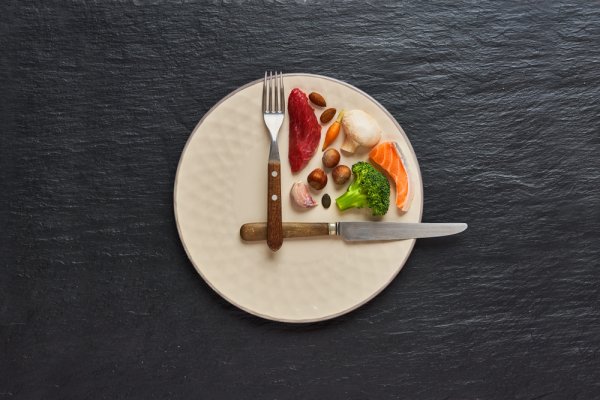
 Highlight the Best Facets of Your Incomparable Beauty: Discover the Best Face Highlighter Currently Available in India and Everything You Need to Know About Using Face Highlighters for Maximum Effect (2023)
Highlight the Best Facets of Your Incomparable Beauty: Discover the Best Face Highlighter Currently Available in India and Everything You Need to Know About Using Face Highlighters for Maximum Effect (2023)
 Forget the Blemishes and Get that Picture Perfect Flawless Radiance on Your Face: Check out the Best Foundations for Oily Skin Currently Available in India and Everything You Need to Know About Makeup Foundations (2023)
Forget the Blemishes and Get that Picture Perfect Flawless Radiance on Your Face: Check out the Best Foundations for Oily Skin Currently Available in India and Everything You Need to Know About Makeup Foundations (2023)
 Make Your Presence Felt Wherever You Go: Discover the Best Perfumes Under 2000 for Both Men and Women to Announce Your Arrival and Make Any Occasion Memorable (2023)
Make Your Presence Felt Wherever You Go: Discover the Best Perfumes Under 2000 for Both Men and Women to Announce Your Arrival and Make Any Occasion Memorable (2023)
 Protect Your Oily Skin from the Harmful Rays of the Sun: Discover the Best Gel Based Sunscreens for Oily Skin and Everything You Need to Know Before Buying One (2023)
Protect Your Oily Skin from the Harmful Rays of the Sun: Discover the Best Gel Based Sunscreens for Oily Skin and Everything You Need to Know Before Buying One (2023)
 Minor Blemishes and Wrinkles Affecting Your Confidence? Check out the Best BB Creams to Conceal Your Worries and Nourish Your Skin to Restore the Healthy, Radiant and Glowing Complexion Back Again (2023)
Minor Blemishes and Wrinkles Affecting Your Confidence? Check out the Best BB Creams to Conceal Your Worries and Nourish Your Skin to Restore the Healthy, Radiant and Glowing Complexion Back Again (2023)
